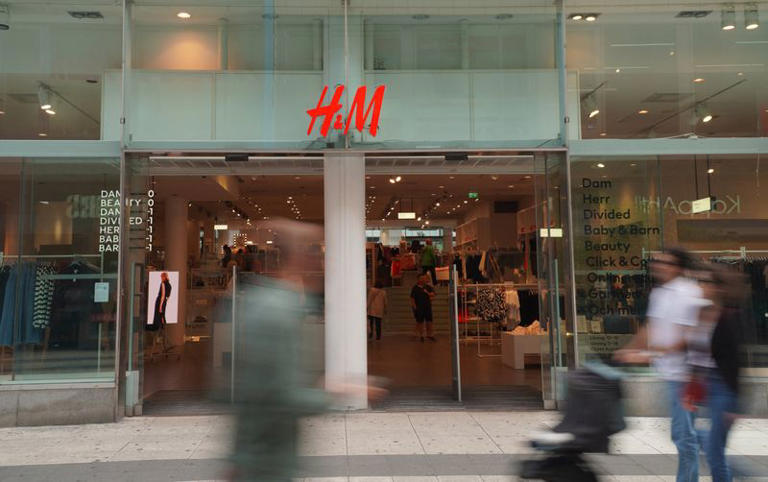Investors are eagerly anticipating the upcoming quarterly earnings report from H&M, which will provide insights into the new CEO Daniel Erver’s strategy for revitalizing revenue growth within the fast fashion retailer. Erver assumed the position in January following the unexpected departure of his predecessor, Helena Helmersson, on the day of H&M’s annual results, causing some unease among investors. Despite efforts to navigate through this leadership transition, H&M shares still remain down 10% from their pre-departure levels.
The retail landscape has become increasingly competitive, with H&M facing challenges in keeping up with larger competitors such as Zara’s parent company, Inditex, whose shares recently reached a record high. Additionally, the expansion of China-based fast-fashion firm Shein into the European market has added further pressure on H&M’s growth prospects.
Dora Buckulcikova, lead portfolio manager at Dutch asset manager Robeco’s fashion equity strategy, highlights the polarization within the consumer space. While some brands have experienced robust demand, others within the mid-market segment are encountering challenges.
H&M, known for its affordable pricing with items like dresses for $9.99 and jeans for as little as $17.99, has been diversifying its offerings by venturing into higher price points with brands like Cos and Arket. However, despite these efforts, the company is expected to report its weakest quarterly sales performance in two years.
Analyst estimates suggest that H&M’s revenue is projected to decrease to 53.4 billion Swedish crowns ($5 billion) from 54.9 billion in the previous year. However, there is optimism regarding the operating profit, which is anticipated to double to 1.422 billion crowns. The upcoming earnings report will be closely scrutinized by investors to gauge the effectiveness of Erver’s approach in navigating the competitive retail landscape and reigniting growth for H&M.
H&M has shifted its focus towards prioritizing profitability over sales volumes, with the aim of achieving a 10% operating margin this year. Despite this strategic shift, the retailer is ramping up its investments in store expansion and logistics infrastructure. In January, H&M announced plans to increase its capital expenditure by up to 30% this year, allocating between 11 and 12 billion crowns towards these initiatives.
Nick Clay, portfolio manager at Redwheel in London, emphasizes the importance for H&M to emulate the approach taken by its competitor, Inditex. Clay suggests that H&M should prioritize investments in enhancing its store network and logistics capabilities, even if it results in short-term pressure on profit margins. Clay’s sentiment reflects the view that such investments are crucial for long-term growth and competitiveness in the fast-paced retail industry. Notably, Clay had previously included H&M in his fund but switched to Inditex in May 2022, indicating his confidence in Inditex’s strategic direction and potential for outperformance.
Enhancing the aesthetic appeal and customer experience within its stores represents a strategic avenue for H&M to attract more discerning and aspirational shoppers, according to industry experts. For instance, the recent opening of an H&M store on London’s King’s Road exemplifies this approach, featuring a more spacious layout, a curated product range, and enhanced comfort in the fitting rooms compared to traditional H&M outlets.
Furthermore, investors are keen to hear details from CEO Daniel Erver about H&M’s plans to optimize its logistics operations, including initiatives to “near shore” production and streamline distribution processes. The agility with which companies in the retail sector adapt to evolving consumer preferences is crucial for maintaining a competitive edge, notes Olivier van Hirtum, head of developed market equities at APG Asset Management. Shorter and more efficient supply chains enable faster response times to emerging fashion trends, allowing companies to capture market share from slower-moving competitors.
H&M is actively implementing measures to enhance its product collections, accelerate time-to-market, and optimize inventory allocation across geographical regions. These efforts are expected to drive improvements in both top-line growth and profitability, according to Magnus Raman, an analyst at Kepler Cheuvreux in Stockholm.
In addition to refining its operational strategies, H&M has been strategically closing underperforming stores in recent years. By the end of the 2023 financial year, the company had shuttered 700 stores compared to 2019, reflecting a 14% reduction in its store footprint.
Despite operational challenges, H&M has maintained a healthy cash position, with cash reserves totaling 26.398 billion crowns, or approximately $2.5 billion, representing a 22% increase from the previous year. However, H&M’s cash reserves pale in comparison to its competitor Inditex, which boasts a significantly larger cash pile of 11.4 billion euros ($12.34 billion).
